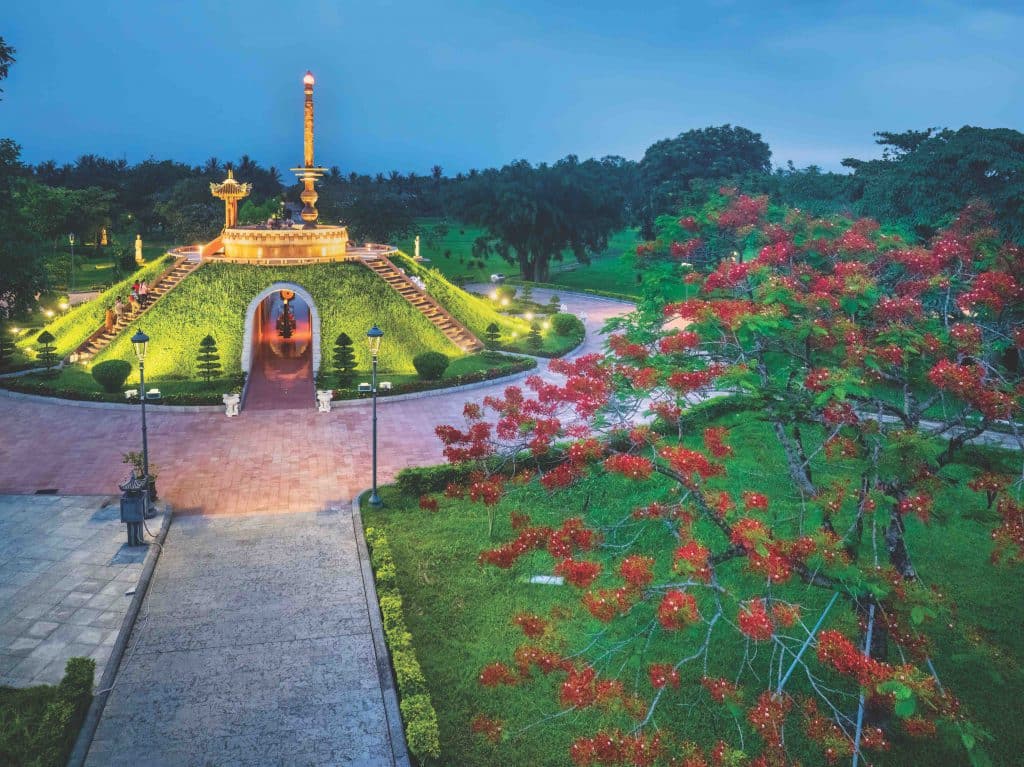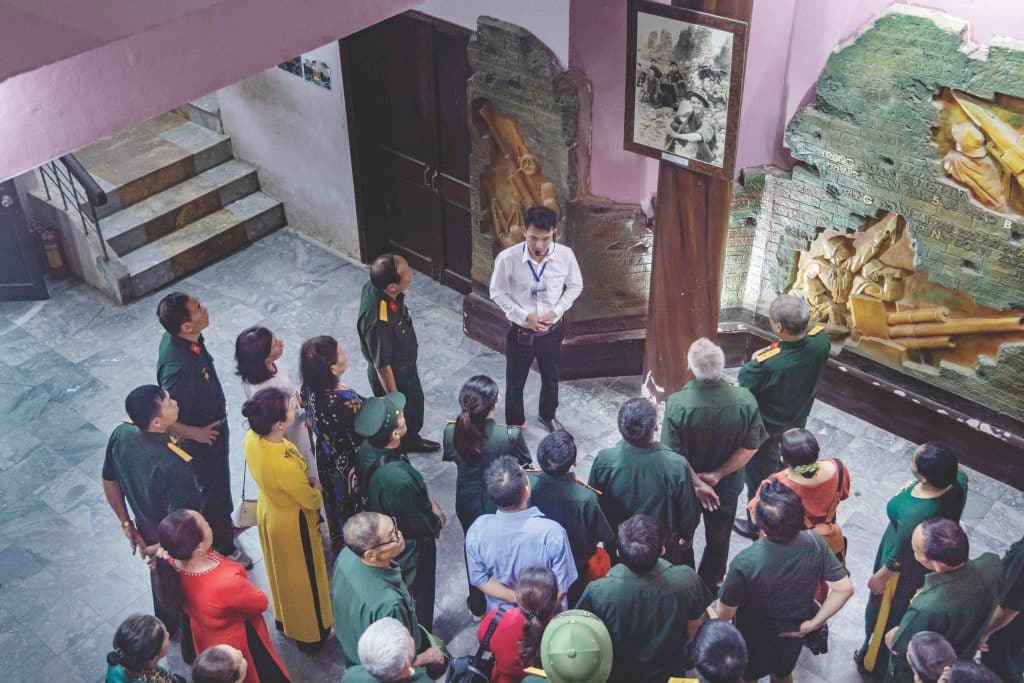Story: Ngo Quang Minh
Photos: Nguyen Hai
People in Quang Tri have a saying: “Even if it’s not fragrant, it still holds the scent of sandalwood; even if it’s not clear, it’s still the water from the Hàn River.” The word “Han” is found in the vernacular name of the Thạch Hàn River, known today as the Thạch Hãn River. In Chinese characters, the name means “vast underwater rock veins.”

The “Dai Nam Nhat Thong Chi,” compiled by the National History Office of the Nguyen Dynasty during the reign of Emperor Tu Duc, describes the Thach Han River in detail:
“Starting from Vien Kieu source in Tran Lao Fort (now Lao Bao) flowing east to Nguu Tat, where Tra Ne Stream from the north of Lang Thin district (north of current-day Muong Phin, Savannakhet, Laos) flows in, then eastward to Thanh Hoa district, with Tam Luu Stream from the north flowing in, veering further east, passing the northern capital of Quang Tri province, it is called the Thach Han River. At Co Thanh Junction, it splits into two branches: One flows northeast to Phu Ong Junction, meets the Ai Tu River (Vinh Phuoc) from the west, passes Dang Xuong district (now Trieu Phong), and at Dai Do Junction (now Tuong Junction), it meets the Dieu Ngao River from Thanh Hoa district (the Dieu Ngao River flows through Dieu Ngao Gate, to Cam Lo commune and is called the Cam Lo River), then through Giao Liem Junction to Viet Estuary. The other branch flows southeast into the Vinh Dinh River in Phong Dien district, meets the Nhung River (Mai Dan) from the west, then southwards to Phong Dien district where it meets the O Lau River (Thac Ma), and then westwards to Tam Giang Lagoon.”
The Thach Han River has always been considered a major and important river, providing freshwater to downstream plains and serving as a vital waterway connecting Quang Tri province with the regions through which it flows.
However, the Thach Han River truly made its mark in the history of nation-building and defense during the modern era, enduring 81 days and nights of fierce battles from June 28 to September 16, 1972, during the heroic defense of Quang Tri Citadel. In that unforgettable story, history calls out the name “Thach Han.” Many young men and women in their twenties devoted their youth to every bend of this river and every inch of the citadel’s land.

“How can we not feel sorry for our lost youth,
But if everyone laments their twenties, what will become of the nation?”
(Excerpt from “Khuc bay” by Thanh Thao)
Many of them merged with the river’s waters in those fierce and glorious days, their youth and vitality nourishing the river to “forever calm the banks” (excerpt from the poem “Loi nguoi ben song” by Le Ba Duong). Their smiles brightened our glorious history, the heroic past, and the bright peaceful future of Thach Han, the citadel, and Quang Tri, enabling today’s generation to take pride in this resilient land where so many devoted and loyal people rest.
With the return of peace, Quang Tri was gradually revitalized. On land that once endured hundreds of thousands of tons of bombs and bullets during fierce battles in 1972, the Quang Tri Citadel Historical Museum was built, modest but profoundly authentic. Inside, it houses letters to the front lines, flags faded with time, and countless invaluable relics that stir many emotions. The main hall on the ground floor holds two black-and-white photos taken by journalist Doan Cong Tinh in 1972. These simple photos, still vivid despite the years, capture the bright eyes and “citadel smiles” of many young liberation soldiers in their teens and twenties, who “put away their brushes and ink for the sword and bow” to “leave home clad in battle armor” (an excerpt from “Chinh phu ngam” by Dang Tran Con).

They were among the thousands of soldiers ferried across the river by O (Miss) Thu and her father – both of whom appear in this photograph. This father and daughter tirelessly rowed their boat to support the troops. Born in 1954 in Trieu Phong, Quang Tri, Nguyen Thi Thu was 18 years old and full of youthful vigor and extraordinary courage during the summer of 1972. In this historic photo, she is the young woman sitting at the front of the boat, holding a gun, next to her father Nguyen Con, who is energetically and firmly rowing. They stayed beside the river, rowing at least 30 trips per day to supply food and weapons, transport soldiers, and evacuate the wounded. Still healthy today, Mrs. Thu now has grey hair. She witnessed the war’s marks on the Thach Han River, heard the roars of battle, and rowed hundreds of trips to ferry troops and supplies. During those unforgettable 81 days and nights, “we never stopped rowing for a single day, nor had a peaceful night’s sleep” recalls Mrs. Thu.
Taken in 1972, this photo was only found and enlarged by journalist Doan Cong Tinh in 2007, when he presented it to Mrs. Thu. After 35 years, this precious photo now hangs in a place of honor in Mrs. Thu’s small house, beside the Resistance Medal awarded to her by the State. She was a witness to countless reunions of comrades who shared life-and-death ferry trips across the Thach Han River.
This country has taken shape thanks to quiet contributions and sacrifices, stories of lives lost or saved, and the youthful vigor of so many small yet great people. The Thach Han River, never silent, still carries alluvial deposits to Viet Estuary today, eternally singing an immortal epic ballad of the heroic burned grasslands. Boats from my hometown are gently rowed along that stretch of the river, while the flowers of independence bloom brightly on its old banks.










